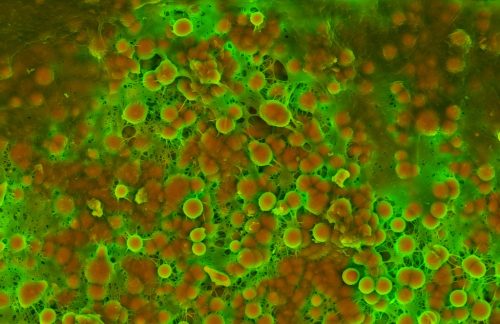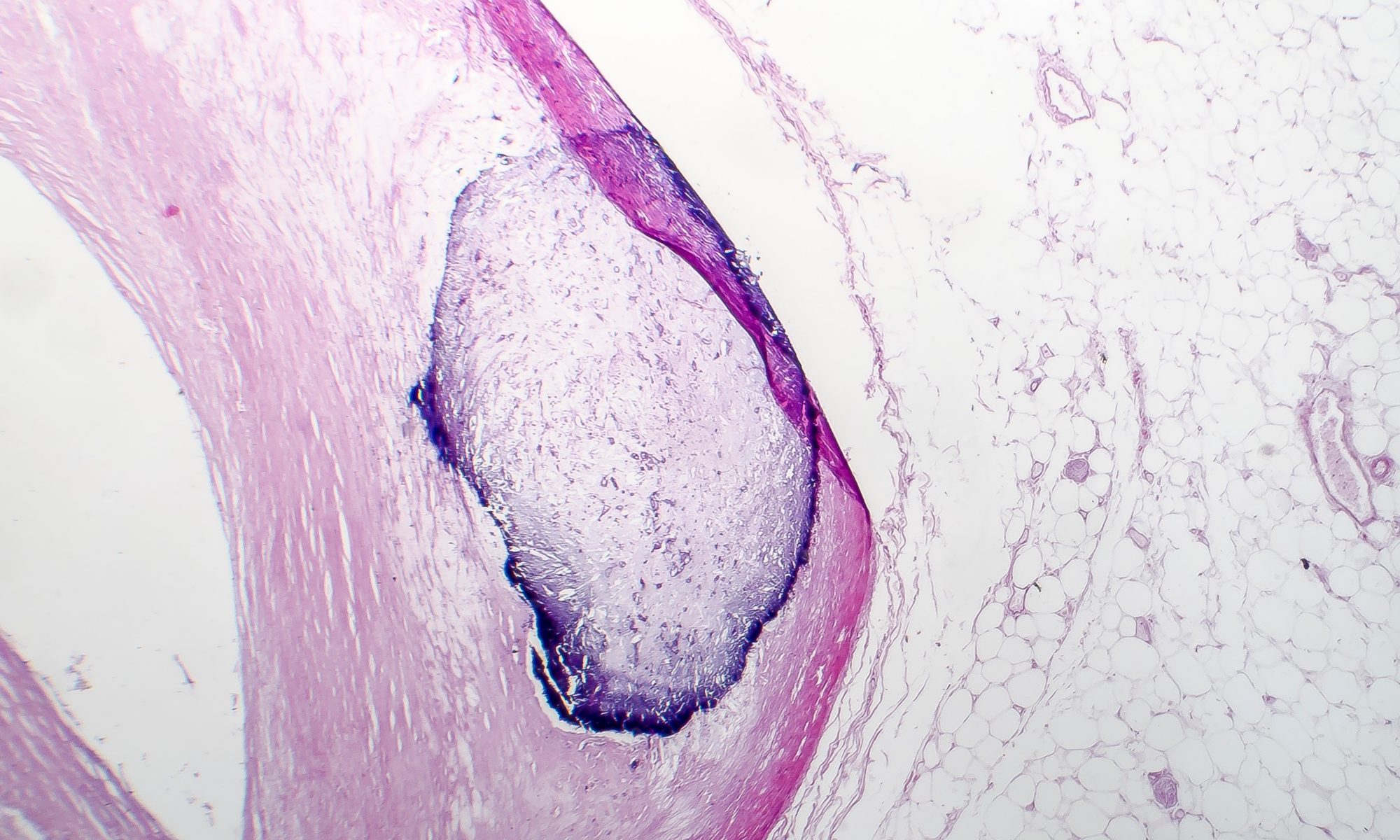
Calcifications in the Body
Calcification is the accumulation of calcium salts in a body tissue. It normally occurs in the formation of bone, but calcium can be deposited abnormally in soft tissue, causing it to harden. Calcifications may be classified on whether there is mineral balance or not, and the location of the calcification.
Smoking is associated with increased calcifications in the heart and major arteries. As smoking is known to be a major risk factor for developing heart disease, these calcifications may also play a role. Overall, quitting smoking has both short- and long-term benefits, especially for your heart, blood vessels, and brain.
There is no proven way to prevent calcifications, as they’re a result of a variety of biological processes. Quitting smoking and changing diet may impact formation of calcifications, depending on the location of the buildup. Kidney stones may form less often with certain dietary changes. Talk to your doctor about ways to incorporate a healthy diet into your lifestyle.
Calcific tendonitis symptoms and treatments: Calcific tendonitis is the unwanted buildup of calcium deposits in your muscles or tendons. Although this can happen anywhere in the body, it’s most common in the rotator cuff of your shoulder. This condition may also be described as calcium deposits in the shoulder.
Calcific tendonitis symptoms: The main symptom is severe, sometimes disabling, pain. It can occur without any apparent cause, especially in the morning. It may be accompanied by stiffness and a frozen shoulder. Among the possible causes of this condition are genetic predisposition, abnormal thyroid activity, and diabetes.
Calcinosis cutis symptoms and treatments: Calcinosis cutis is the deposit of calcium under the skin. This can happen anywhere on the body. One rare form of it can occur on the face or upper body after a case of acne. The deposits usually show up as whitish bumps on the skin’s surface. They may have no other symptoms, or they may become tender and discharge a chalk-colored creamy material that’s mainly calcium.

Causes of Calcinosis Cutis
The causes of calcinosis cutis are broken down into four major types:
- Dystrophic calcinosis cutis refers to calcium deposits that result from trauma, acne, varicose veins, infections, and connective tissue disease.
- Metastatic calcinosis cutis can be caused by hyperactive thyroid, an internal cancer, destructive bone disease, excessive vitamin D intake, sarcoidosis, and chronic renal failure.
- Iatrogenic calcinosis is the name for calcium deposits that result from a medical procedure such as calcium injections or repeated heel sticks (pricking the heel to draw blood) with newborns.
- Idiopathic calcinosis is the name given when there’s no known cause for the condition. It’s usually localized in one area.
Dystrophic calcinosis: Dystrophic calcinosis can occur in tissue that is damaged or inflamed or has become malignant or died. Conditions that can lead to dystrophic calcinosis cutis are:
- skin injury
- skin infections
- connective tissue diseases
- panniculitis
- acne
- tumors
Iatrogenic calcinosis: Iatrogenic calcinosis are typically attributed to certain medications and medical procedures such as repeated drawing of blood from an infant’s heel.
Metastatic calcinosis: Metastatic calcinosis can result from any medical condition associated with excess phosphorus (hyperphosphatemia) and calcium (hypercalcemia), including:
- kidney failure
- sarcoidosis
- paraneoplastic hypercalcemia
- hyperparathyroidism
- milk-alkali syndrome
- calciphylaxis
- excess vitamin D
Idiopathic calcinosis: Idiopathic calcinosis cutis is calcinosis that can’t be attributed to a specific cause. The typical reasons have been ruled out: Phosphate and calcium levels in your body are normal. There is no evidence of previous tissue damage. You’re not taking medications that could trigger calcinosis. You haven’t had medical procedures recently that could trigger calcinosis.

Alternative Treatments
There are a few natural remedies you can try to treat calcium deposits on the skin:
Massage. Although not necessarily recommended by medical professionals, many people claim that massaging the affected area with aloe vera gel or olive oil eliminates the calcium deposits over time.
Diet. Many advocates of natural healing suggest lowering your calcium intake and avoiding foods such as dairy products can help.
Apple cider vinegar. Some believe that drinking 1 tablespoon of apple cider vinegar mixed in 8 ounces of water every day will help break down calcium deposits.
Chanca piedra. Others suggest the herb chanca piedra can break down the buildup of calcium in the body.
Increase the amount of Vitamin K and magnesium in your diet. These nutrients may cause calcium deposits to occur in the body if you have a deficiency. Some dietary sources of Vitamin K and magnesium include collard greens, kale, green peas, seeds, spinach, beans, fish, carrots and lettuce.
Take warm soaks in the bathtub. Warm soaks can help treat and prevent calcium deposits from worsening. Fill up a tub with warm water and soak for a period of 20 to 30 minutes daily. If you have pain and inflammation as a result of calcium deposits, icing the area can help.
Consumption connection? Except in certain rare metabolic disturbances that raise blood calcium, calcification of joints and tendons is a local process that’s not influenced by calcium intake.

How To Make Homemade Magnesium Oil
Ingredients
- ½ cup magnesium chloride flakes
- ½ cup distilled water (to extend the shelf life)
- Glass spray bottles
Directions
- Bring ½ cup of distilled water to a boil.
- Add ½ cup magnesium flakes to a glass measuring cup or bowl.
- Once water has boiled, pour it into the bowl of magnesium flakes and stir until the flakes completely dissolve.
- Let this mixture cool and transfer to labeled spray bottles for daily use.
- Store your homemade magnesium oil at room temperature for up to 6 months.
To Use:
Start by using just a few sprays on your skin; initially no more than five. Over the next few days, gradually work up to 10-20 sprays a day. I like to apply my homemade magnesium oil in the crook of my arms, back of my knees, and stomach for best absorption.
It is also wise to do a patch test on your skin (particularly if you have sensitive skin) before applying the spray all over your body. A lot of people may initially experience tingling or a slight itching sensation where the oil is applied. This can be relieved by applying aloe vera on the site or coconut oil about 20 minutes after applying the oil (to give it a chance to absorb properly).


